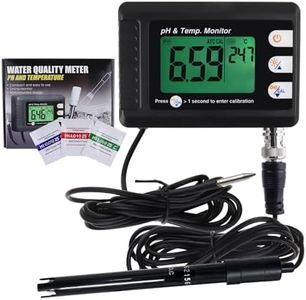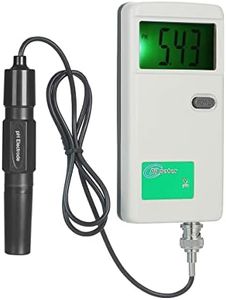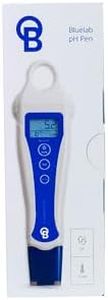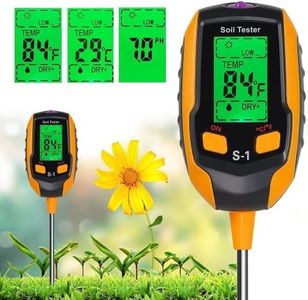We Use CookiesWe use cookies to enhance the security, performance,
functionality and for analytical and promotional activities. By continuing to browse this site you
are agreeing to our privacy policy
10 Best Ph Meters
From leading brands and best sellers available on the web.By clicking on a link to a third party's website, log data is shared with that third party.
Buying Guide for the Best Ph Meters
Choosing the right pH meter is all about understanding the environment in which you'll be using it and how accurate you need the measurements to be. pH meters are vital tools for testing the acidity or alkalinity of solutions, commonly used in fields like gardening, aquariums, pools, laboratories, and food processing. When picking a pH meter, you should consider where and how often you'll use it, what features are most useful for your tasks, and how precise the readings need to be for your application.AccuracyAccuracy tells you how close the meter's reading is to the true pH value. This is crucial because a small difference can matter a lot in scientific work, food preparation, or water treatment. Less precise meters (±0.2 or ±0.1 pH units) are usually fine for general use like gardening or pool testing. For more critical measurements, like laboratory work or brewing, you might want higher accuracy (±0.01 or ±0.02 pH units). Choose the accuracy that matches how exact your results need to be—casual uses can be more forgiving, while specialized tasks need more precision.
CalibrationCalibration ensures your pH meter provides reliable results over time. Simple meters may offer manual calibration with a screwdriver, while more advanced models allow one, two, or even three-point digital calibration, which helps dial in accuracy. Frequent users or those needing very precise results should look for easy, multi-point calibration, usually done with standard pH buffer solutions. Consider how often you’re willing to calibrate—some use cases, like laboratories, may require more frequent calibration for trustworthy results.
Electrode TypeThe electrode or probe is the part of the meter that comes into contact with the solution. Different types are optimized for liquids, semi-solids, or even soils. Disposable or gel-filled electrodes need less maintenance but can’t be repaired, while refillable electrodes last longer with care but require regular cleaning and refilling. Pick an electrode designed for the substances you’ll measure most often—water, soil, food, or something else—and think about how much maintenance you’re willing to handle.
RangeThe range tells you the minimum and maximum pH values the meter can detect, typically from pH 0 to 14. Most everyday uses like gardening, pools, or aquariums don’t require the full pH scale, but some specialized uses might. If you’re unsure, stick with meters that cover the whole 0–14 range for maximum flexibility, but if you know you’ll be measuring only in a certain window (like 6–8 for aquariums), a narrow-range meter may deliver greater accuracy.
Portability and BuildpH meters come in various forms, from bench-top models to portable pens or handheld devices. Portable models are best for fieldwork and quick checks, being lightweight and battery-powered, while bench-top versions offer advanced features for lab environments but are less convenient to move around. Consider where you’ll use the meter most—on the go, at home, or in a lab—and pick a design that matches your setting and lifestyle.
Display and UsabilityA clear, easy-to-read display makes using a pH meter much simpler, especially in bright or dark conditions. Some meters show only pH, while others might display temperature or have backlighting. Simple controls can make for a smoother experience, especially if you’re new to pH meters. Think about whether you need extra info or convenience features, and how user-friendly you want your device to be.
Temperature CompensationTemperature can affect pH readings, and many pH meters offer automatic temperature compensation (ATC) to adjust for this, ensuring accurate results even if the solution isn’t at room temperature. If you’re measuring in environments where temperature changes often or where high accuracy is needed, look for meters with ATC. For casual or controlled-temperature testing, this may be less essential, but it’s a handy feature to avoid error from temperature shifts.
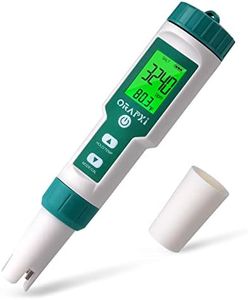

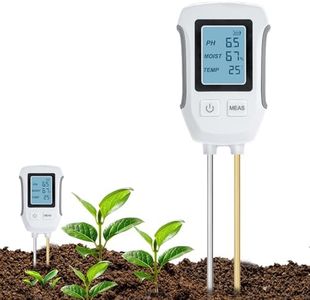
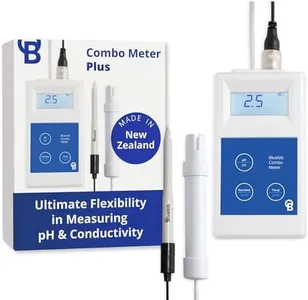
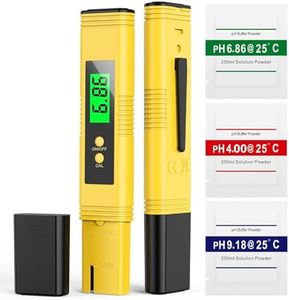
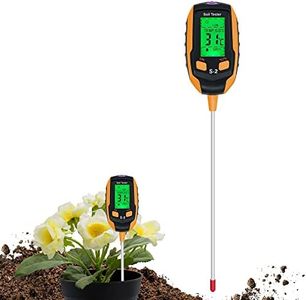
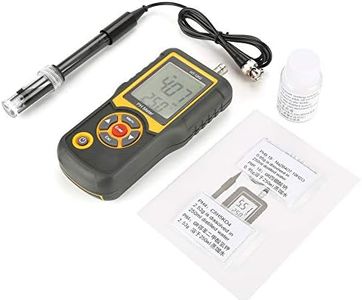
![[Upgraded] Soil Moisture Meter, 4-in-1 Soil pH Tester, Soil Moisture/Light/Nutrients/pH Meter for Gardening, Lawn, Farming, Indoor & Outdoor Plants Use, No Batteries Required](https://images-proxy.bestreviews.guide/MN4dwSh53rtrRb0SpRcpF-ppol8=/0x300/https://m.media-amazon.com/images/I/41EL4vJQVGL._AC_CX679_.jpg)
